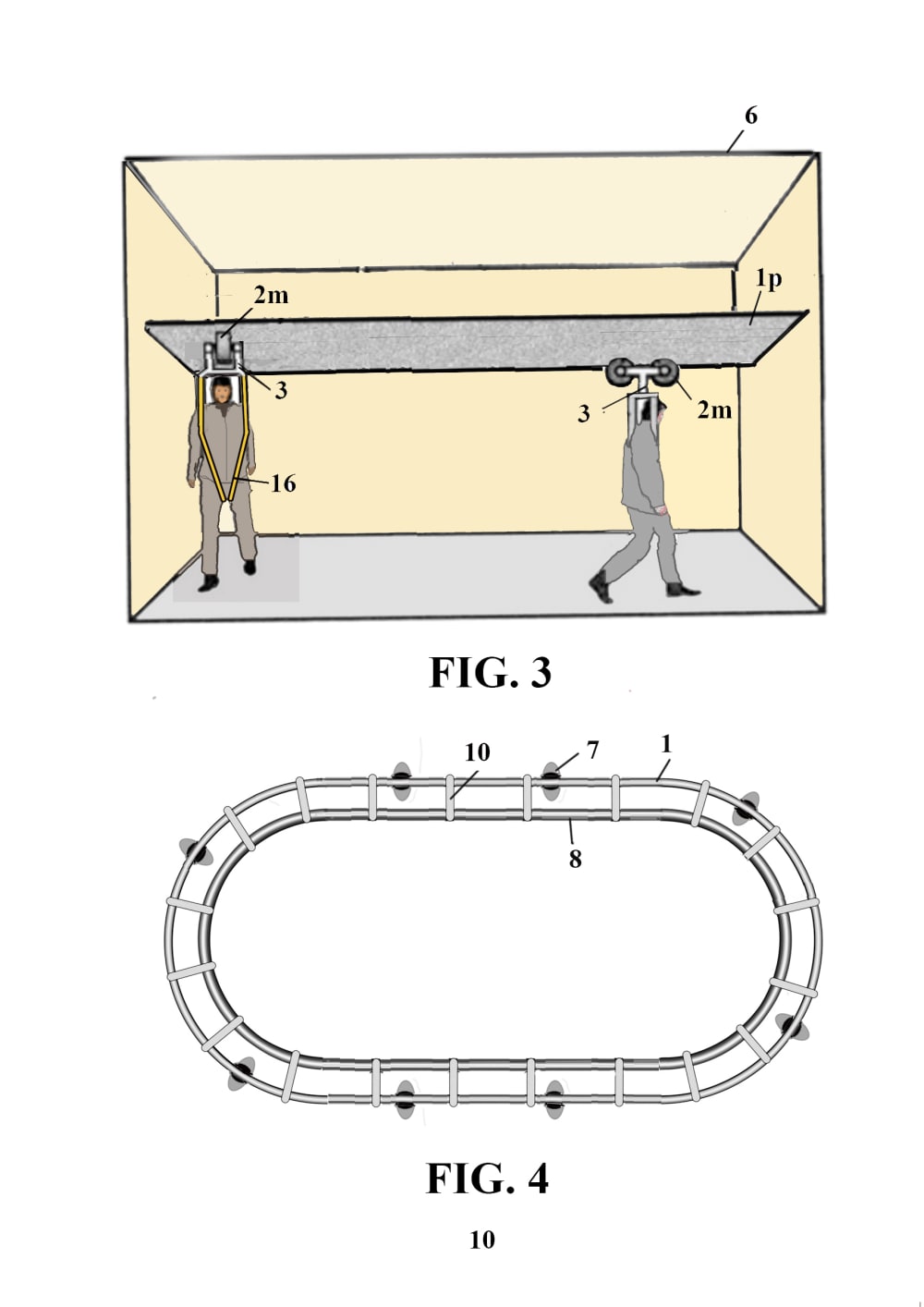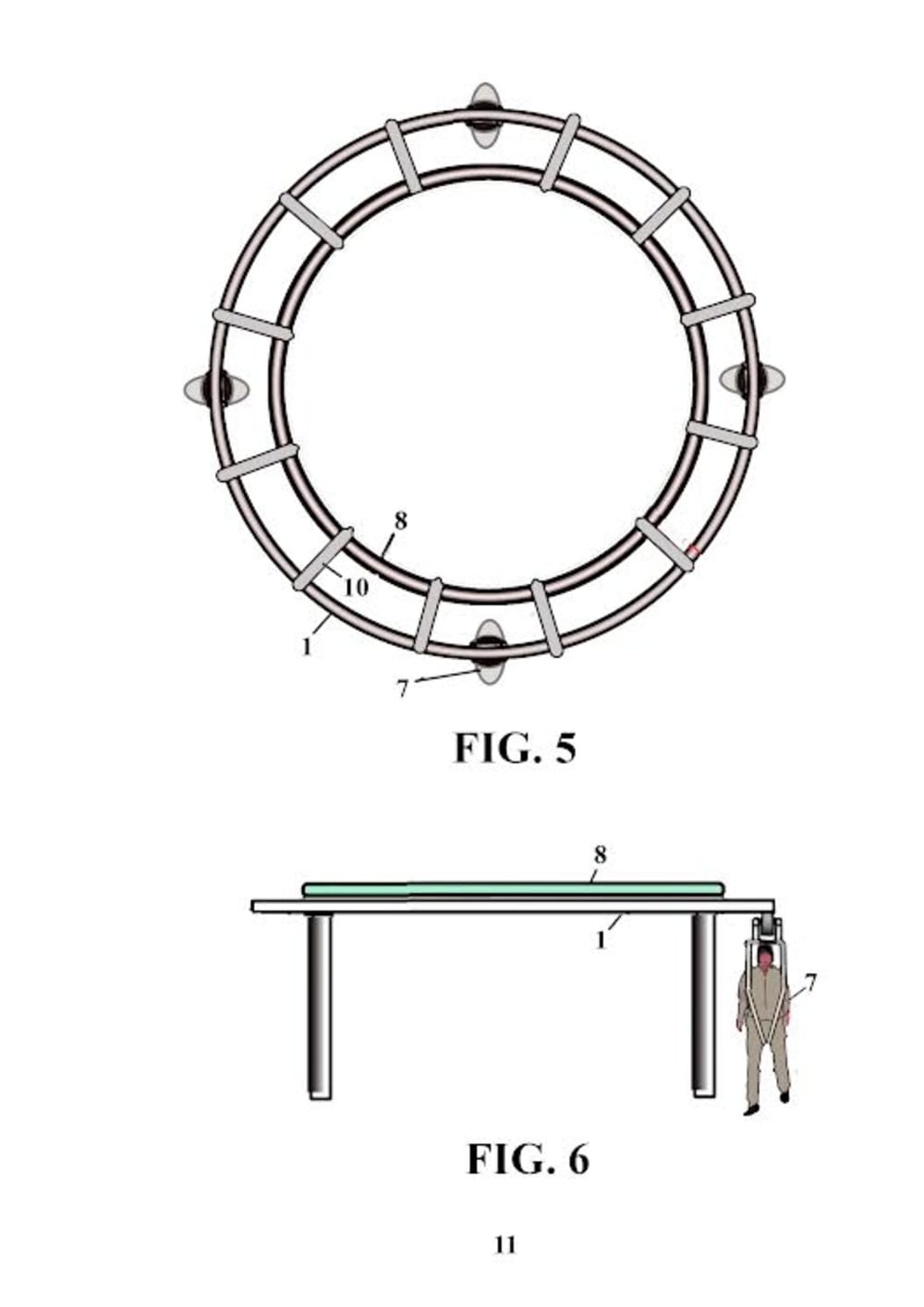Using an assistive device that facilitates the movement of people with disabilities or problems in the lower limbs, hips, spine, or due to obesity. It prevents falls and allows for rehabilitation. It completely or partially relieves the weight of the body that the legs support when they, the spine, or the hips are damaged, also due to obesity. With this system, the total or partial weight is supported by the device, which rests on the armpits and crotch. The system is valid for rehabilitation by partially unloading the body weight depending on the existing damage. It can be used to support individuals during bathing in pools. This means that the device can support the entire body or part of it when the injury is not very severe. It is also useful for use in pools.
It allows walking normally or almost normally, supporting fully or partially on the device or apparatus as needed, and allows people with problems to bathe and exercise in pools. Optionally and additionally, one or two crutches or canes can be used as a complement. This may be necessary initially in more severe cases and can be gradually eliminated as muscle consistency is restored or the involved parts of the spine, hips, legs, and feet heal. It provides a simple, economical, useful, and practical system that allows for rehabilitation and movement without impacting the damaged areas.
This invention prevents or reduces the difficulty that people with movement problems due to or related to damage to the spine, hips, and lower limbs face. The support and rehabilitation system for patients and disabled people consists of avoiding or reducing movement problems through a complementary system supporting both lower limbs, reducing weight, and is characterized by comprising:
- A device consisting of support elements of a harness that moves via wheels hanging from elevated tracks or rails; the harness supports the user from the armpits and/or crotch;
- Tracks that are hung from the ceiling of the rooms;
- Rails that are supported by posts fixed to the floor; and
- Devices that adjust the distance (or tension) between the tracks or rails and the floor.
The rails can run over and/or alongside pools. The rails are tubular and cylindrical, and the tracks are flat and rectangular or can be shaped like a circuit or closed track in a circular or elliptical-rectangular form. The wheels may have a flat, arched, truncated-conical, or pulley-like periphery. The wheels can also be magnetic, in which case they adhere to and roll along the underside of the tracks or rails. The support elements hold the wheels by the ends of their axles. Bearings are optional since the speeds are low. A joint or pivot can be added for turning using the same rail. This allows the user and their harness to turn relative to the rail.
An electric motor can be added, which, controlled with a remote control or a mobile phone, allows the user’s movement to be managed.
Like this entry?
-
About the Entrant
- Name:Jesus Hernandez
- Type of entry:individual









